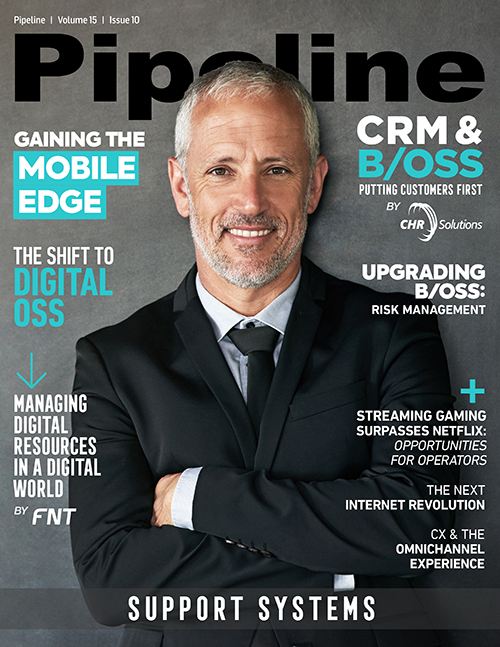Shifting from Voice to Digital OSS
 Let me start with a story. When I first entered the OSS market 20 years ago, I joined a company called Granite, which was first acquired by Telcordia Technologies and later by Ericsson. At the
time, it was one of the most advanced inventory systems available, competing with other inventory systems—small and large—such as Cramer Systems. To my surprise, the company’s product is still
used and is in production in many places today.
Let me start with a story. When I first entered the OSS market 20 years ago, I joined a company called Granite, which was first acquired by Telcordia Technologies and later by Ericsson. At the
time, it was one of the most advanced inventory systems available, competing with other inventory systems—small and large—such as Cramer Systems. To my surprise, the company’s product is still
used and is in production in many places today.
Twenty years ago, we could make OSS platform decisions with reasonable confidence that our choices would remain viable for many years. In the 1990s, for example, if we decided to build our OSS around a particular brand of relational database, we believed it could remain viable through 2010. The predominant question customers were asking us at that time was: how we do IP and, with some exceptions, MPLS? The good news was that we could always get away by having IP address management. I still recall the head of product management saying, “we are going to make look this “IP-ish.” I still don't know what that means, but customers were extremely happy with the “innovations” of the time.
Fast forward 20 years into today´s world, and it seems like many things have changed but some things have not changed at all. We can probably categorize the underlying reasons, facts, and challenges into the following categories:
Pace of innovation
As an industry, we have been talking about cloud, network innovation and virtualization—such as the application of SDN/NFV—for quite some time. The early successes of the network virtualization concepts were combined with some of the frustrations telcos were experiencing. Ibrahim Gedeon, CTO of Telus touched on this point during Digital Transformation World last year by stating Telus had to hire more engineers to run its NFV farm. Some rumors confirm there are a few successful NFV deployment, such as at Telia Sonera. But most of the processes are still manual, and they are in a different place. Many SDN projects morphed into SD-WAN projects or are conversely rebranded as SDN altogether. Today, operators are looking at edge, multi-cloud and distributed processing and computing, struggling to keep pace with the speed of innovation as it is unfolding.
Customer experience as a part of digital transformation
One of the biggest challenges for any provider today is managing the customer experience. Millennials and Generation Z are exerting great influence in the workforce and commercial economy. As a result, the one-click, Apple-device experience is becoming a mandatory part of the workflow. More and more, applications must be designed and evaluated for ease of use. Gone are the days where network engineers were logging into the devices via shell—and manually changing the configuration of many. The customer expectation is, increasingly and unrelentingly, about doing it all in real time with the same ease and effort as it takes to buy a pair of shoes on Amazon.
Telecom transformation
Telecom companies have long been in the IT business, but recently there is a clear push to change to bring more agility into the telecom with existing IT tools. If done well, the added agility can be used to break transformation projects down into smaller, more manageable pieces. The art of transformation is in designing small autonomous teams and designating a breakdown of work to minimize dependencies. Agility, with the help of IT, will transform telcos into dynamic, digital enterprises, which is increasingly important to remain competitive.



















